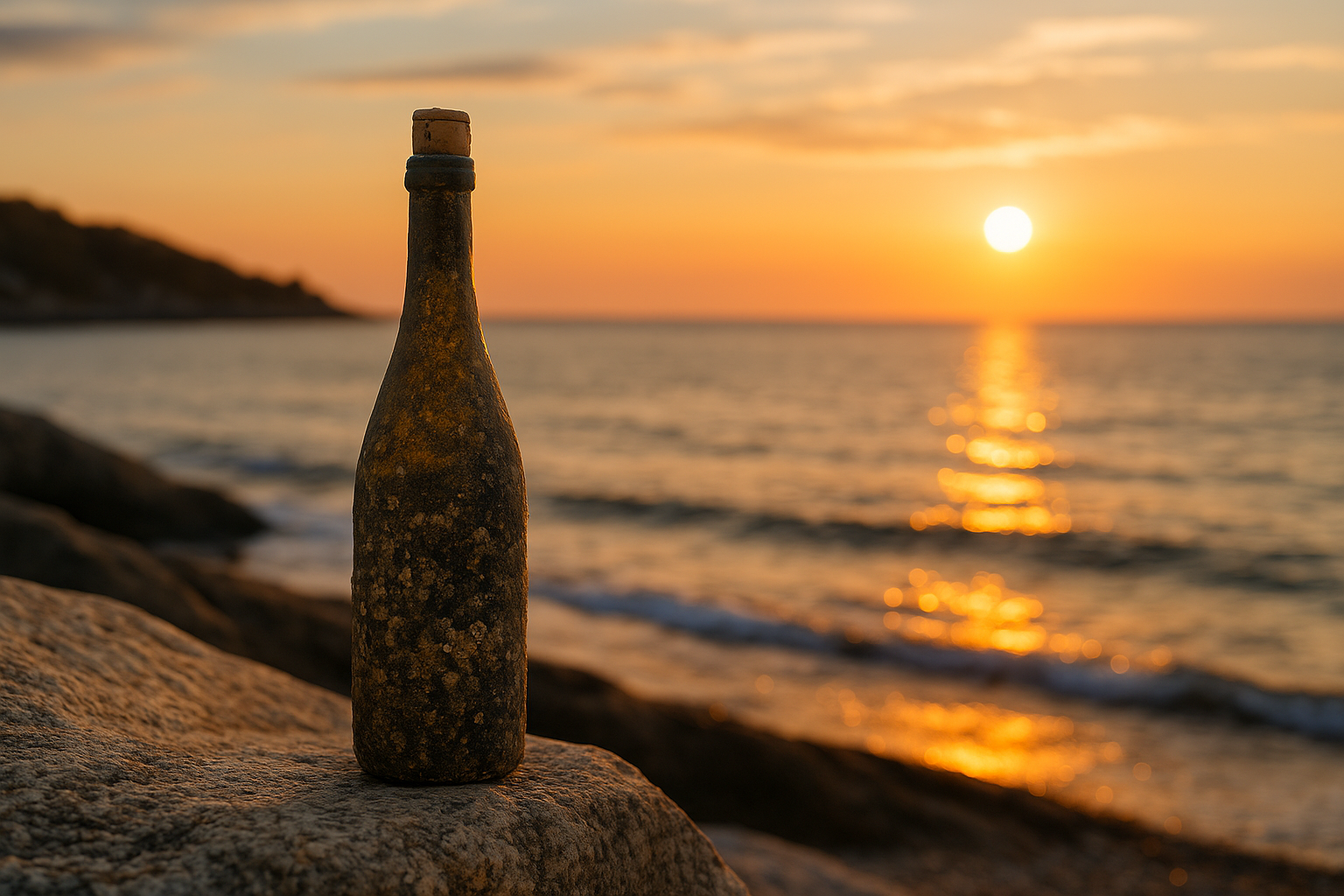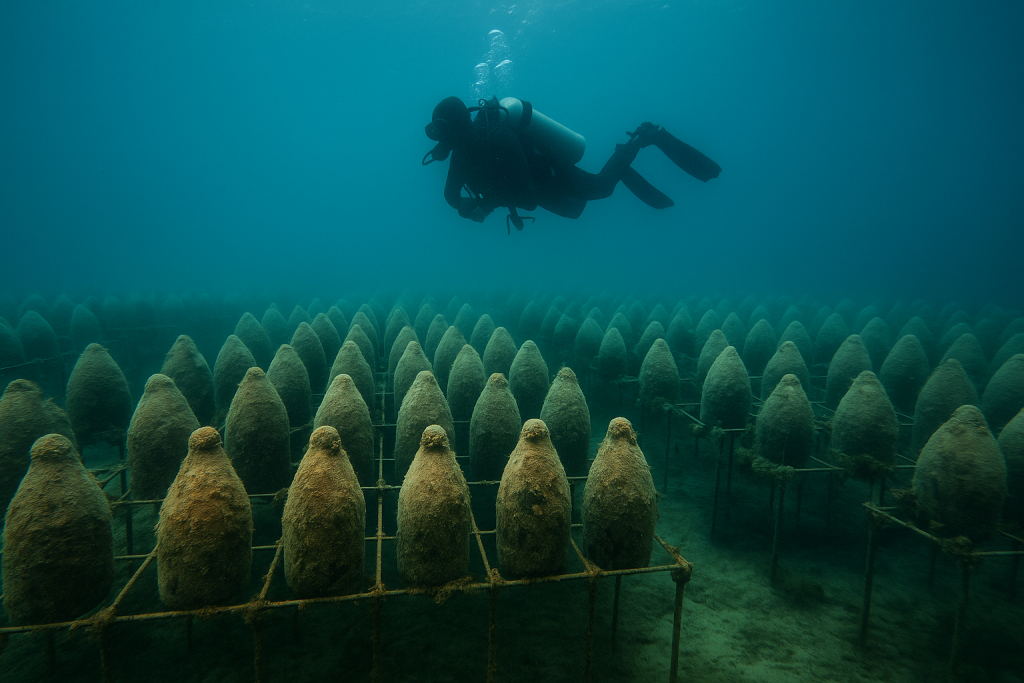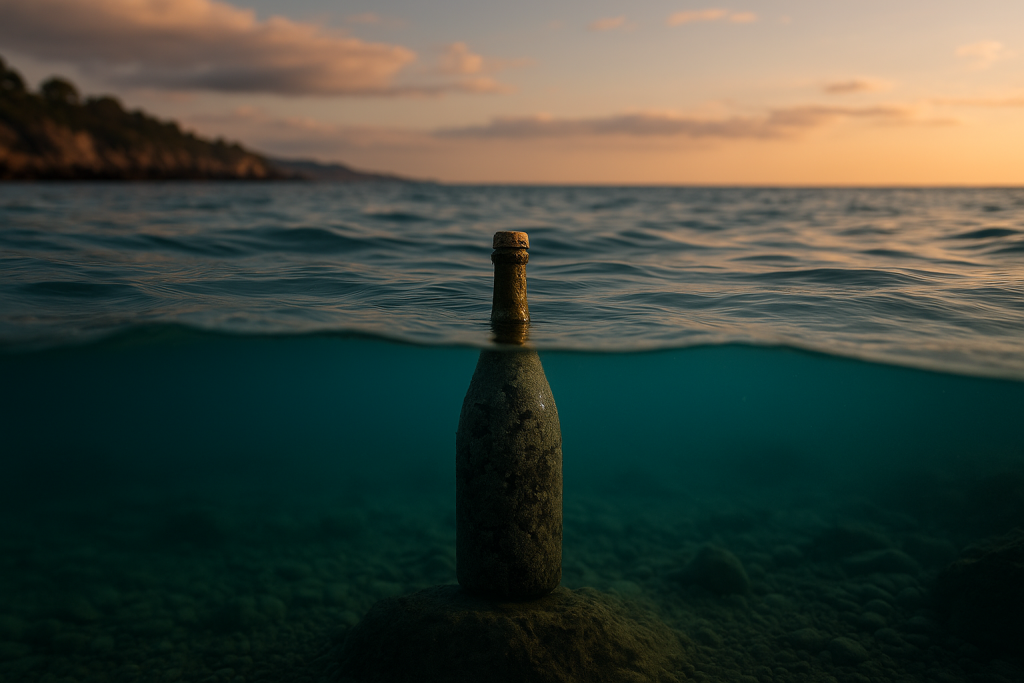
Imagine opening a bottle that has spent a full year beneath the sea. The glass is encrusted with tiny shells, the label almost gone, the cork untouched by sunlight. You pour a glass, and for a moment you taste not only the wine but the mystery of the deep.
It sounds like something out of a novel, but underwater wine aging is very real. Winemakers around the world are experimenting with it, curious about how pressure, darkness, and gentle sea motion might influence the evolution of wine. Some call it the future of aging. Others say it’s just clever marketing.
Let’s explore what’s really happening below the surface — and whether this oceanic trend might one day change how we think about wine.
What Is Underwater Wine Aging?
Underwater aging simply means submerging sealed wine bottles (or sometimes clay amphorae) at a certain depth for months or even years.
The environment underwater offers some unique conditions that can’t easily be replicated on land:
- Constant temperature: Water stays remarkably stable, avoiding sudden heat spikes or cool nights.
- Darkness: Complete absence of UV light prevents oxidation and light damage.
- Gentle movement: Currents lightly rock bottles, which may keep lees in suspension and soften textures.
- Pressure: At 20–60 meters, pressure increases dramatically, which might subtly affect the wine inside.
- Silence and isolation: The sea shields bottles from vibration, sound, and temperature shifts.
Some winemakers have even coined the term “merroir” — a nod to terroir — to describe how the ocean itself may leave a signature on the wine.
From Shipwrecks to Science
The idea started not in a lab but in history. Divers exploring old shipwrecks in the Baltic Sea discovered centuries-old bottles of Champagne and wine that had survived astonishingly well. Those bottles, still sealed, tasted surprisingly fresh.
That discovery sparked a question: was it luck — or did the sea itself act as a perfect natural cellar?
Curiosity turned into experimentation. A few daring producers began submerging cages of bottles off coastal waters, timing their retrievals like underwater harvests.
Today, underwater aging is still a niche practice, but one that’s spreading from Spain to Italy, France, Croatia, Greece, Argentina, and even parts of the U.S. Each project varies — different depths, bottle types, and durations — yet they all share one fascination: what can the ocean do that land cannot?
What the Research Says
While many stories about underwater wines are romantic, some real science backs the idea.
One detailed study, Comparative Analysis of Cellar and Sea (Underwater) Aging on Chemical Composition and Quality, examined Merlot and Sangiovese wines aged in a traditional cellar versus under the sea.
You can read the full study here: https://pmc.ncbi.nlm.nih.gov/articles/PMC11202423/
The key findings:
- Both cellar- and sea-aged wines lost some phenols and anthocyanins over time (that’s natural aging).
- But underwater wines showed different patterns in color and aroma development.
- In red wines, especially, the phenolic profile shifted — possibly due to lower oxygen exposure and constant pressure.
- In blind tastings, some tasters described the sea-aged versions as “softer,” “rounder,” and “more integrated.”
In short: the ocean doesn’t perform miracles, but it seems to guide the wine’s evolution in slightly different ways. The effect is subtle — yet real enough to intrigue scientists and sommeliers alike.

Who’s Doing It — And How
Several wineries now age bottles underwater. Each does it a bit differently, experimenting with depth, time, and style.
| Winery / Project | Location | Depth | What They Age | Notable Feature |
|---|---|---|---|---|
| Crusoe Treasure | Bay of Biscay, Spain | ~18 m | Reds & blends | “Underwater winery” using marine cellars in metal cages |
| Leclerc Briant “Abyss” | Brittany coast, France | ~60 m | Champagne | Premium biodynamic sparkling wine aged under the Atlantic |
| Cantina Bisson | Liguria, Italy | ~50 m | White & sparkling | Early pioneer of sea-aged wines off Portofino |
| Wapisa / Bodega Tapiz | Patagonia, Argentina | 20–50 ft | Malbec magnums | Claimed softer texture and brighter fruit after 9 months underwater |
| Gaia Winery | Santorini, Greece | 10–20 m | Assyrtiko | Exploring sea influence in volcanic Mediterranean waters |
Each winery reports subtle differences — sometimes color shifts, sometimes aromatic freshness. Many bottle pairs are sold together: one sea-aged, one land-aged. Tasting them side by side is half the fun.
How Does It Taste?
If you’ve never tried a sea-aged wine, here’s what people who have often report.
Possible Effects
- Smoother texture: Gentle movement and constant temperature might help soften tannins.
- Subtle salinity: A whisper of briny minerality — though no seawater ever touches the wine.
- More color stability: Especially in reds, hues stay brighter and less oxidized.
- Complex aroma: Some tasters note nutty, toasty, or caramel tones from altered aging chemistry.
- Freshness: Certain wines appear livelier or more youthful than their cellar-aged counterparts.
What Doesn’t Change Much
- Alcohol, acidity, and pH remain the same.
- Not every wine benefits equally. Light whites or delicate rosés might show little difference.
- Results can vary widely by location and depth.
The general consensus: the ocean’s influence is gentle, not dramatic. Yet that nuance is what fascinates winemakers — it’s an entirely new variable in the art of aging.
The Practical Side — Challenges & Risks
Underwater wine aging is beautiful in theory, but complex in practice.
1. Cork integrity:
At depth, pressure is enormous. If a cork leaks even slightly, seawater can ruin the wine.
2. Environmental concerns:
Bottles placed in marine zones must not disturb ecosystems. Regulations are strict, and every project requires environmental permits.
3. Retrieval risk:
Bottles must be brought up slowly and carefully. Too much pressure change can pop corks or damage labels.
4. Cost:
Diving, cages, insurance — all add up. These wines are expensive to make and even more expensive to sell.
5. Legal gray areas:
In some countries, aging food or beverages under seawater is considered unsanitary unless certain standards are met. That’s why most underwater wineries operate with government-approved research partnerships.
Despite all that, the number of projects keeps growing. Passion, curiosity, and the promise of uniqueness continue to drive the movement.
Gimmick or Future?
Every new technique faces skepticism. Some call underwater aging a publicity stunt. Others see it as a genuine breakthrough in oenology.
The truth lies somewhere between.
It’s true that the barnacle-covered bottles look spectacular in marketing photos. But it’s also true that researchers are beginning to find consistent chemical differences — small but measurable.
Here’s the real takeaway: underwater aging expands how we think about wine. It asks new questions about time, motion, temperature, and environment. It challenges the idea that a perfect cellar must be underground.
Even if sea-aging never replaces land-aging, it enriches the conversation. It reminds us that wine is alive — responsive, mysterious, and always ready to surprise.
Could It Ever Go Mainstream?
Possibly — but only in limited ways.
The main obstacles are cost, logistics, and regulation. It’s hard to imagine mass-market wineries submerging thousands of bottles each year. But small boutique producers? Absolutely. Especially as technology improves and the process becomes safer and cheaper.
There’s also consumer fascination. People love a good story, and few bottles tell a story as romantic as one that “slept beneath the sea.”
In the long run, expect to see sea-aged wines at luxury tastings, wine museums, and collector events. They’ll remain rare — and all the more desirable for it.

Why It Matters
Underwater wines aren’t just about novelty. They embody what wine culture has always been about: curiosity, craft, and connection to nature.
Every experiment like this teaches us something — about chemistry, about environment, about patience. And maybe, about our desire to find beauty where we least expect it.
For winemakers, the ocean becomes a new frontier. For drinkers, it’s a reminder that the story of wine never really ends. It just dives deeper.
How to Continue Exploring the Topic
If you love stories like this, you’ll enjoy browsing our other wine trend features in the
👉 Industry News & Trends section.
Want to contribute your own article or opinion on wine innovation?
You’re warmly invited to submit a piece via our
👉 Guest Post page.
And of course, for all things wine — from culture to cellar talk — visit
👉 The Little Cellar Wine Company homepage.
Final Thoughts
The ocean has always been part of wine’s story — from shipping barrels across seas to the salt air that shapes coastal vineyards. Underwater aging takes that connection further, transforming curiosity into practice.
Maybe it’s a fad. Maybe it’s a glimpse of the future. Either way, it reminds us that wine, like the sea, is alive with movement and mystery.
Next time you raise your glass, think of the waves, the quiet pressure, the cool darkness — and imagine how the ocean itself might be aging the wines of tomorrow.